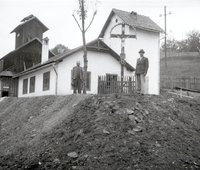Banská Belá village is an old mining village, once a mining town. The most precious monument is the parish church from the 13th century, which size points to the former importance of the village. The oldest preserved mention of Banská Belá is connected with silver mines already in 1228, even before the Tatar invasion. The beginnings of mining in Banská Belá region are connected with surface mining, the period of Celtic settlement is not excluded. The richest parts of the gold-silver deposit came to the surface in a length of about 400 m and a width of about 40 m. Probably with the arrival of German miners in the area in the 13th century, deep mining also began. The young town was developing promisingly, stamping mills, water-smithy and smelters for processing ore grew towards in Kozelník valley. The importance of Banská Belá at that time is evidenced by the fact that it was already granted town rights in the 13th century, and in the 15th century at the latest it became a full member of the Union of Seven Mining Towns, which consisted of Kremnica, Banská Štiavnica, Banská Bystrica, Pukanec, Nová Baňa, Ľubietová and Banská Belá. The gradual decline began in the 16th century. There were several reasons: decrease in quality of ores and increase in the cost of their mining, groundwater in the mines as mining progressed to greater and greater depths, and almost a century of Turkish plundering. The free royal and mining town of Banská Belá lived in the shadow of Banská Štiavnica until 1788, when both towns merged into the twintown of Banská Štiavnica and Banská Belá.



